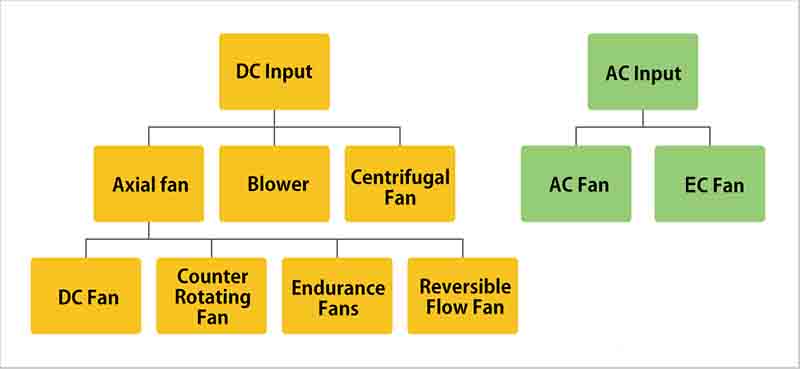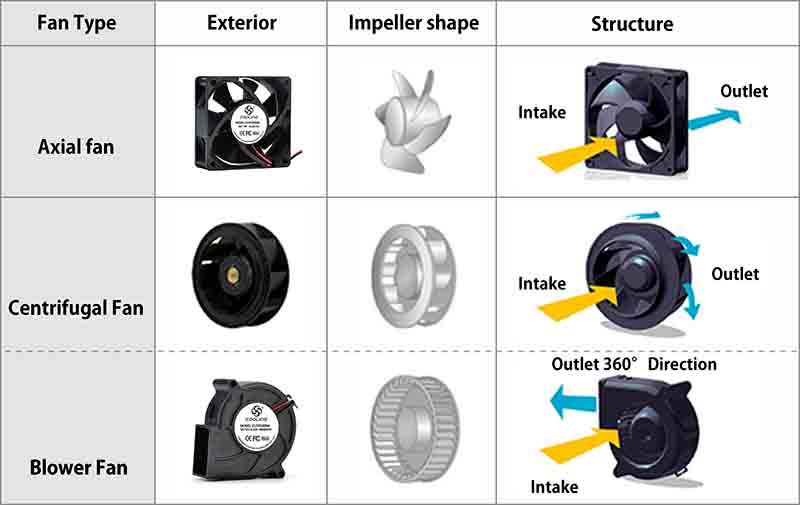Fans come in a variety of types, each suited for specific applications in our daily lives. COOLING offers an extensive range of fans, and understanding their differences can help highlight their unique features.
Differences in Driving Power
The first distinction lies in the power source. AC fans run on alternating current (AC) from an electrical outlet, while DC fans are powered by direct current (DC). The speed of AC fans is determined by the frequency of the AC supply, whereas DC fans allow for adjustable speeds, controlled by both the motor and the circuit.
Currently, DC fans are the more common choice due to their ease of control and wide availability in various forms.
Another type is the EC fan, which can operate on both AC and DC power. These fans include a mechanism that converts AC power into DC, enabling them to function in the same manner as DC fans, even when powered by AC.

